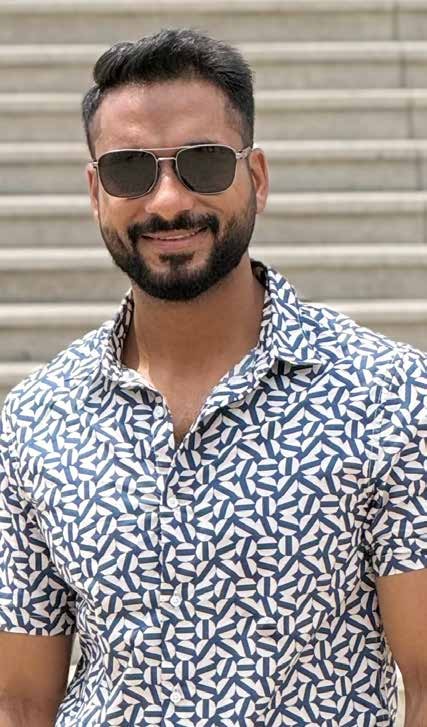Postpartum Recovery
Gaurav Bansal, Co-Founder of Omama Clinics by MyHealthBuddy, shares how the clinic is redefining postpartum recovery in India through an integrative approach that combines physical therapy, nutrition, and emotional care – while urging greater collaboration with aesthetic medicine professionals to deliver safe, holistic results for new mothersy.

Postpartum recovery in India has long been overlooked, with the focus often placed solely on the baby while the mother’s healing – physical, emotional, and hormonal – remains in the shadows. Challenging this norm is Gaurav Bansal, Co-Founder of Omama Clinics by MyHealthBuddy, a pioneering initiative that redefines how postpartum care is delivered. In this interview, Bansal speaks to Shriyal Sethumadhavan about the urgent need for structured postpartum support, how Omama is integrating physical therapy, nutrition, and emotional well-being, and why collaboration with aesthetic medicine professionals is essential for delivering safe, effective, and truly transformative care for new mothers.
What inspired the creation of Omama, and how does it address a gap in postpartum care that often goes unspoken in traditional medical or aesthetic setups?
The inspiration for Omama came from a deeply personal place. As coaches at MyHealthBuddy, we worked with thousands of women and noticed a recurring theme – postpartum recovery was being treated as an afterthought. Women were being handed babies and expected to ‘bounce back’, but no one was helping them heal, physically or emotionally. Traditional medical systems focus on the baby, while aesthetic setups jump straight to surface-level solutions like skin treatments. Omama was created to bridge that gap – to bring structured, evidence-based recovery support that starts from within, not just from what is visible outside.
You have seen mothers traveling hours to access your services. What does that say about the demand and emotional need behind postpartum recovery?
It speaks volumes. We have had mothers drive for four to five hours just to attend our sessions – often with their newborns in tow. That is not just demand – that is desperation. Postpartum care is severely underserved in India, and women are silently suffering from pain, weakness, body image issues, and emotional trauma. When they find a space like Omama – where they are seen, heard, and supported – it becomes a lifeline, not just a service. That emotional connection is what sets us apart.
How can aesthetic dermatologists and plastic surgeons work alongside postpartum specialists to offer holistic transformation for mothers?
We strongly believe aesthetic professionals and postpartum specialists are allies, not alternatives. Before any aesthetic treatment is considered, the foundation – strength, mobility, hormonal balance, mental health – needs to be addressed. For instance, a woman with unresolved diastasis recti might undergo a tummy tuck, only to deal with functional issues post-surgery. Collaboration means aligning timelines, sharing insights, and cocreating plans where physical therapy, nutrition, and emotional healing precede or accompany aesthetic procedures. The outcome? Happier clients and longer-lasting results.
Stretch marks and skin laxity are common postpregnancy concerns. What is your approach to managing these issues before clients seek aesthetic treatments?
We educate women that stretch marks and skin laxity are not just skin-deep. They often signal deeper issues like nutrient deficiencies, hormonal imbalances, or rapid fat loss due to crash diets. Our approach includes restoring collagen through nutrition, encouraging gradual weight loss, improving hydration, and teaching women how to nourish their skin from within. Physical therapy also plays a role – in improving circulation and promoting tissue regeneration.
How does Omama integrate physical therapy, nutrition, and emotional support to enhance both healing and appearance outcomes?
At Omama, we do not believe in isolated solutions. A session might begin with pelvic floor therapy, followed by a discussion on how iron deficiency impacts hair fall, and end with a sharing circle where mothers talk about their anxieties. Everything is connected. Our programmes are designed by a multidisciplinary team – physiotherapists, nutritionists, mental health coaches – who work in sync. This layered approach helps mothers not just look better but feel stronger, more confident, and emotionally grounded.
With over 160+ sessions in just one month, what are some common concerns women come to you with – and how do they evolve over time with treatment?
The most common issues we see are persistent back pain, urinary incontinence, hair loss, abdominal separation, and a sense of loss of identity. There is also a deep fear – “Will I ever get my old body back?” Over time, as women engage with our programme, the narrative shifts. They go from being in pain to feeling powerful, from hiding their bodies to celebrating them. The healing is visible not just in their posture or skin, but in the way they walk into a room – taller, prouder, and more self-assured.
What advice would you give to aesthetic medicine practitioners looking to create safer, more effective postpartum treatment plans for new mothers?
Start with empathy and education. Understand that postpartum women are not just looking for aesthetic change – they are rebuilding a sense of self. Partnering with postpartum experts can help you assess readiness, identify red flags (like pelvic floor dysfunction), and offer safer timelines for treatments. Even a simple screening checklist or referral to a postpartum programme like Omama before starting procedures can drastically improve outcomes and client satisfaction. In the end, it is about treating the whole woman, not just her skin.